
Fast Track to Certainty: Confident Biopharma Decisions with LC-Single Quadrupole Mass Detection
This eBook presents compelling examples of how the powerful Pro iQ Plus mass detector can significantly elevate analysis and QC in biopharma.

This eBook presents compelling examples of how the powerful Pro iQ Plus mass detector can significantly elevate analysis and QC in biopharma.
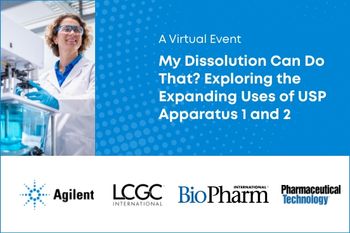
Webinar Date/Time: Tue, Oct 7, 2025 11:30 AM EDT

The increasing demand for high-purity, regulatory-compliant guide RNA (gRNA) manufacturing in the CRISPR gene editing market underscores the need for advanced production capabilities.

Melting point determination using ultraviolet-visible (UV-Vis) spectrophotometry can be used as a sequence-specific method for identifying therapeutic oligonucleotides in pharmaceutical quality control. This method offers a simple, highly selective approach to differentiate between isomers and ensure the integrity of oligonucleotide active pharmaceutical ingredients (APIs) and drug products.
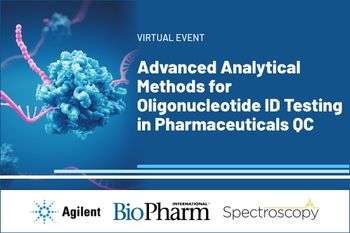
Webinar Date/Time: Session 1: Tues, Dec 5, 2024, at 12:00 PM BST | 1:00 PM CET Session 2: Tues, Dec 5, 2024, at 11:00 AM PST | 2:00 PM EST | 7:00 PM GMT Session 3: Wed, Dec 6, 2024, at 9:30 AM IST | 12:00 PM SGT | 1:00 PM JST | 3:00 PM AEDT
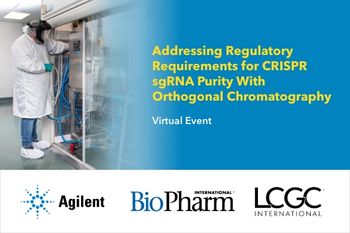
Webinar Date/Time: Session 1: Tue, Oct 22, 2024 11:00 AM EDT Session 2: Tue, Oct 22, 2024 2:00 PM EDT Session 3: Wed, Oct 23, 2024 2:00 PM JST
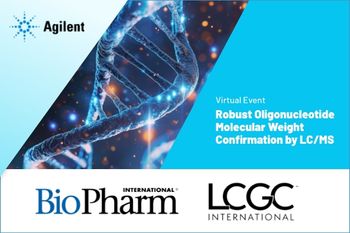
Webinar Date/Time: Tue, Oct 8, 2024 11:00 AM EDT

Discover how to accurately analyze purity and impurities, determine sequences, and more with next-generation technologies from Agilent.
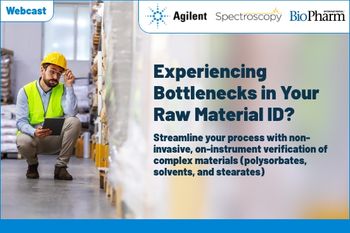
Webinar Date/Time: Tuesday, January 9, 2024 at 11am EST | 8am PST | 4pm GMT| 5pm CET

Reaching sustainability and efficiency goals simultaneously is possible in RMID, a regulatory-enforced part of (bio)pharmaceutical drug manufacturing.

This technical overview discusses best handling practices for IVT mRNA and analysis with the Fragment Analyzer systems, including sample handling and quantification tips.
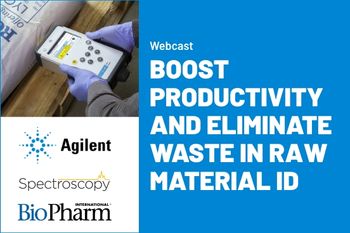
Webinar Date/Time: Thu, Aug 17, 2023 11:00 AM EDT

End-to-End Workflow Solutions for Oligonucleotide Analysis - From research discovery to production QA/QC

This short video provides an overview of a complete, end-to-end oligonucleotide workflow solutions

In this application note, LC separation and MS1 mass identification of a variety of oligos without the use of ion‑pairing reagents is demonstrated. The LC separation allows subsequent positive mode use with little to no flushing or hardware changes. This HILIC-based method uses an Agilent InfintyLab Poroshell 120 HILIC-Z column and MS-friendly ammonium acetate-based mobile phases. The samples were analyzed on an Agilent 1290 Infinity II LC system and a 6545XT AdvanceBio quadrupole time-of-flight mass spectrometer (LC/Q-TOF).

Characterization of oligonucleotides requires robust analytical instrumentation and methods as well as ease-of-use data analysis tools. Biocompatibility mitigates non-specific sample binding to flow path and it ensures the integrity of biomolecules and robustness of the system. In this study, two workflows, the Target Plus Impurities (TPI) and Sequence Confirmation workflows in Agilent MassHunter BioConfirm software, were carried out to characterize two oligonucleotide samples.

In this application note, the determination of oligo sequence confirmation using HILIC LC and high-resolution MS/MS data is described. As with the previous studies, an InfinityLab Poroshell 120 HILIC-Z column was used along with an Agilent 6545XT AdvanceBio LC/Q-TOF mass spectrometer.

UV-Vis spectrophotometers have been used widely for nucleic acid quantification and quality control (QC) utilizing the fact that nucleic acids have a maximum absorbance at 260 nm (1). The concentration of nucleic acids can be easily estimated using the absorbance at 260 nm and the established absorption coefficient. Often a background correction is also performed, for example collecting a baseline using a solution containing everything but the nucleic acid or by measuring the absorbance at a wavelength that nucleic acids do not absorb. Double stranded nucleic acids are bound by hydrogen bonds between the base pairs. The temperature at which double stranded nucleic acids denature to become single stranded depends on the: – sequence and length of the nucleic acid – the pH and buffer conditions – and any mismatches in base pairs between the two strands As such, the melting temperature is very useful analytical tool and can be studied by monitoring the absorbance at 260 nm as temperature is increased or decreased. As the temperature is increased, the hydrogen bonds between the strands are broken and the double stranded nucleic acid separates into two
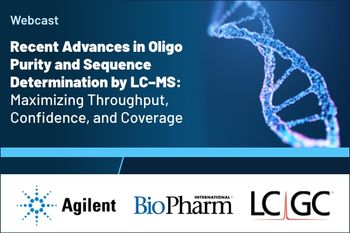
Tuesday, November 15th 2022 Morning Session: 11am EST|8am PST|4pm GMT|5pm CET Afternoon Session: 2pm EST|11am PST|7pm GMT|8pm CET Analyzing oligos? Join us to learn about novel, automated, and integrated software to support the analysis of the CQAs of oligos using LC–HRAM MS. Purity and sequencing data will be presented for a multitude of oligos including antisense, aptamer, and long synthetic samples.
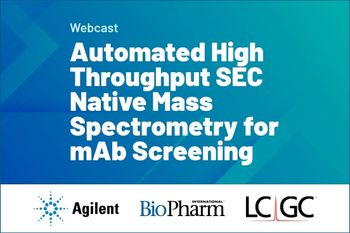
Thursday, September 22nd, 2022 9:00am EDT|6:00am PDT|2:00pm BST|3:00pm CEST 2:00pm EDT|11:00am PDT|7:00pm BST|8:00pm CEST See how RapidFire automated size exclusion chromatography (SEC) combined with the power of ion mobility mass spectrometry (IM-MS) enables efficient biotherapeutic development.
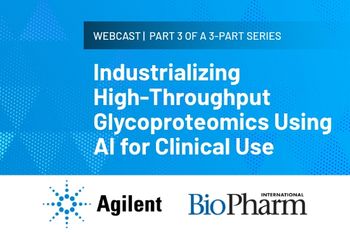
Aberrant glycosylation of proteins has been implicated in key steps of disease biology, including the hallmarks of cancer as well as inflammation cascades associated with autoimmunity and aging. InterVenn Biosciences harnesses the predictive powers of artificial intelligence combined with cutting edge mass spectrometry to discover clinically relevant biomarkers that can only be revealed by high-resolution analysis of the glycoproteome.

Improved host cell protein analysis using highly reproducible and scalable automated sample digestion and fractionation ahead of LC–MS coupled with iterative MS–MS

Automated MHC-I is associated peptide enrichment using the Agilent AssayMAP Bravo platform with large-capacity Protein A cartridges for immunopeptidomics analysis.

The AssayMAP Bravo was used to purify, digest, and clean up antibodies from 96 cell culture supernatants with high reproducibility and minimal labor prior to LC–MS.

Automated phosphopeptide enrichment from cell lysates with Fe(III)-NTA enables the identification of thousands phosphopepides with high reproducibly and selectivity.

Automated Antibody Drug Conjugate (ADC) purification and deglycosylation increases reproducibility and simplifies drug-to-antibody ratio (DAR) determination.

Automated sample prep and LC–MS peptide mapping approach to characterize and quantify multiple monoclonal antibody (mAb) critical quality attributes (CQAs)

Intact and subunit antibody mass determination was streamlined using automated purification and enzymatic cleavage and deglycosylation of immobilized antibodies.

Automated phosphopeptide enrichment and ion mobility mass spectrometry (IMS-MS) enables detailed analysis of structural effects of site-specific phosphorylation.
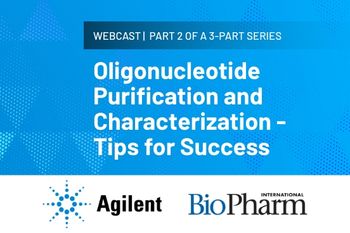
Wednesday, March 30th, 2022 at 11am SST | 2pm AEDT | 10am ICT | 12pm KST Applying the appropriate tools for oligonucleotide purification and subsequent analysis is a unique challenge requiring application specific solutions. Join Drs. Anne Blackwell and Matthew L. Turner of Agilent Technologies for tips on oligonucleotide analysis and purification with Agilent’s suite of Bio LC solutions.

Published: January 18th 2022 | Updated:

Published: April 13th 2022 | Updated:

Published: April 13th 2022 | Updated:

Published: April 13th 2022 | Updated:

Published: April 13th 2022 | Updated:
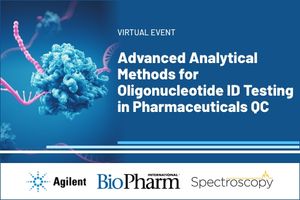
Published: October 22nd 2024 | Updated: